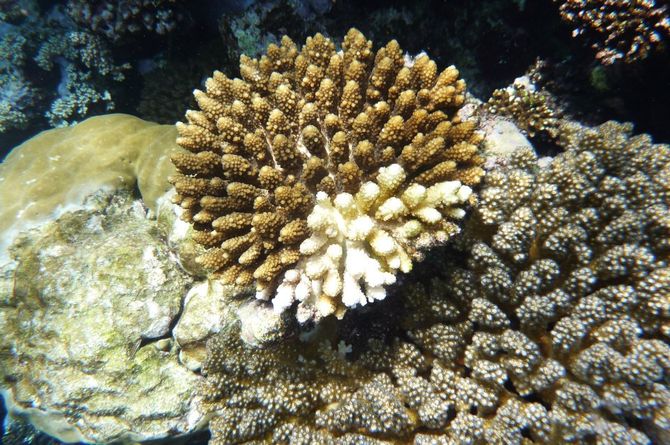Coral Bleaching increased risk
HEPCA has received an alert warning of an increased risk of coral bleaching in the Red Sea. August in these waters is the high risk time for coral bleaching, water temperatures rise and the coral bleaching process can accelerate. The southern reefs, especially the reefs around Zabargad and Rocky Islands, are under increased risk of coral bleaching. HEPCA are calling on all dive guides, instructors and guests (divers and snorkelers) to assist us in monitoring the possibility of occurrences of coral bleaching throughout the Red Sea by watching for signs of bleaching (examples of what to look for are in the photographs below). If you see any of these signs, please take note of as much of the following information as you can. Photos are extremely useful so if possible please forward those too. Date: Dive site name: Depth: Bleached coral genera (if possible): (if no photo) Size of bleached area (rough estimates): Water temperature: (from your computer or that of another diver on the same site) Some background: Corals live in symbiosis with a single-celled algae called zooxanthellae which lives inside the tissue of the coral. The coral provides shelter for the zooxanthellae and in return the zooxanthellae supply the coral with up to 90% of its food requirements. Coral bleaching is a natural response to environmental stress where the coral expel its zooxanthellae, the coral then turns white or transparent as it is the zooxanthellae which give the coral its colour. If the conditions which caused the corals to bleach abate, the corals can survive however if the zooxanthellae are not regained the coral will starve and die. A number of factors such as flood plumes, pollution, sedimentation, disease and increased water temperatures can cause corals to stress and bleach. Over the last years the major cause of coral bleaching has been a consequence of climate change - unusually high water temperature. If the water temperature stays above average for a long period, severe and widespread bleaching can occur, also known as “mass bleaching”. The initial signs of mass bleaching are inconsistent and vary from gradual and patchy to rapid and uniform. Due to this inconsistency, a wide network of observers giving regular reports on the health of the reefs over a wide geographical scale becomes crucial to be able to detect the early signs of mass bleaching.



